1 of 27
Downloaded 332 times
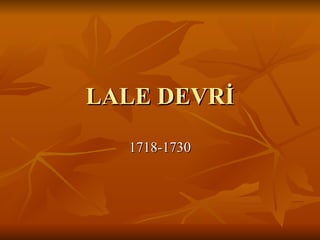
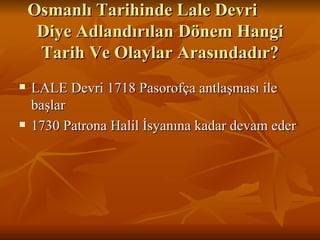
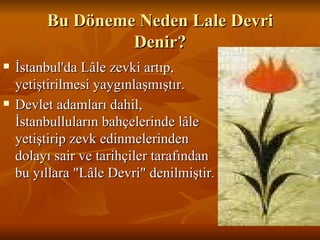

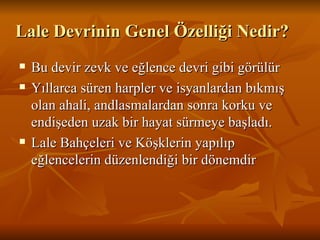

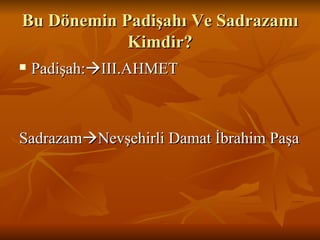
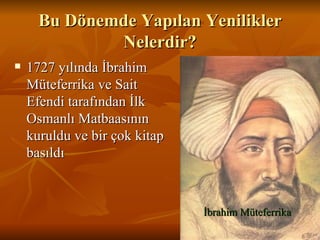
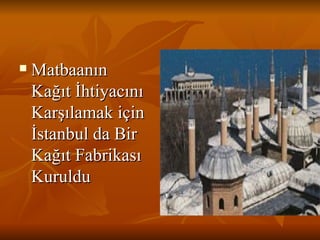
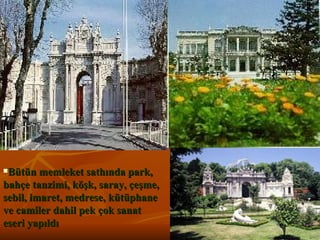
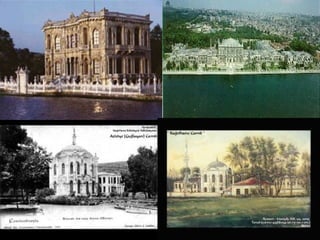
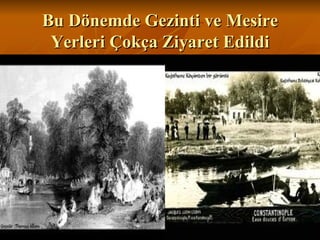

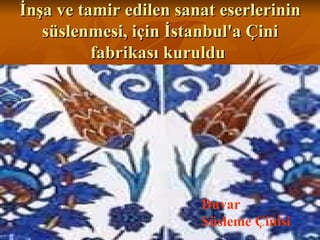
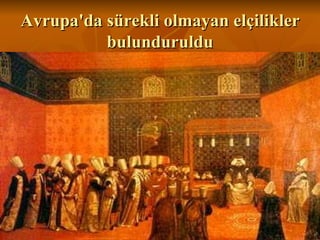
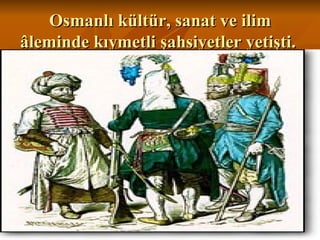

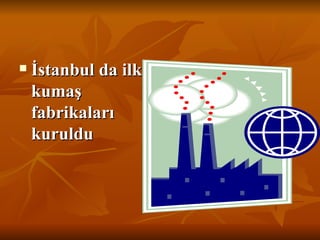
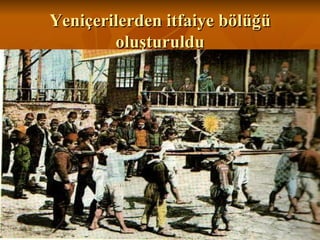
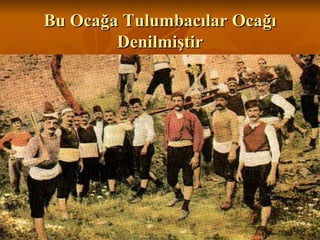
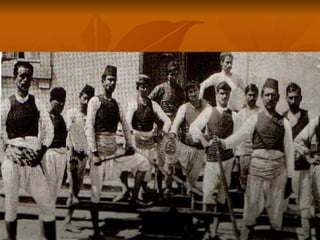
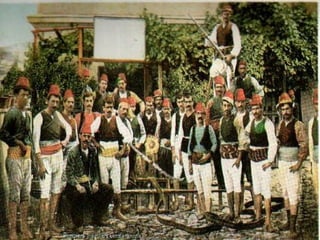
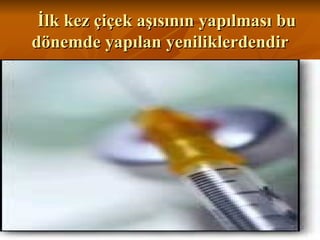
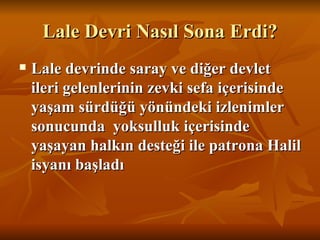

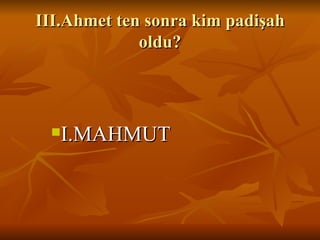
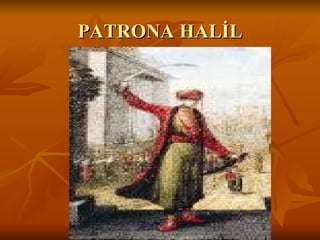
Ad
Recommended
Impact of anesthesia on respiratory system
Impact of anesthesia on respiratory systemisrar khan
Őż
This document discusses the effects of anesthesia on respiratory physiology. It notes that general anesthesia can impair ventilation through airway obstruction and loss of airway patency. It also reduces ventilation by decreasing respiratory rate or tidal volume. This causes hypoxia and hypercapnia. Anesthesia also decreases functional residual capacity, causing more hypoxia. The document outlines these effects for different anesthetic agents and recommends preparations like positioning and pre-oxygenation to mitigate risks to ventilation and gas exchange under anesthesia.Compliance and resistance
Compliance and resistancehamna rafaqat
Őż
The document describes two individuals' experiences with smoking and related health issues. Michael started smoking at age 9 and was diagnosed with COPD at age 44. He struggled to quit smoking until having a health scare at age 52 that prompted him to stop. He had lung surgery and is working to improve his health. The document also describes an unnamed woman who started smoking as a teenager and was later diagnosed with oral cancer at age 25 and throat cancer at age 40. She underwent radiation therapy and surgery but continued smoking and passed away from her health issues at age 53.Ventilator graphics
Ventilator graphicsAhmed Hegazy
Őż
This document provides an overview of neonatal ventilator graphics and waveforms. It discusses the key waveforms of pressure, volume, and flow and how they depict the respiratory cycle. Specific features of each waveform are described, including how they can reveal conditions like leaks, auto-triggering, gas trapping, and changes in compliance. Pulmonary loops like the pressure-volume and flow-volume loops are introduced and how they can provide information about lung mechanics, resistance, compliance, and other conditions. Interpretation of loop features is covered for various pathological states and responses to treatments.Mechanical Ventilation.pptx
Mechanical Ventilation.pptxPunitTiwari40
Őż
Mechanical ventilation uses positive pressure to deliver gas to the lungs. There are several modes that have evolved over time including negative pressure ventilation and newer microprocessor controlled positive pressure systems. The basic function is to deliver gas to the lungs while parameters like tidal volume, respiratory rate, pressures and timing are adjusted based on the patient's condition and response. Common modes include controlled mandatory ventilation which provides all breaths from the ventilator, assist control which provides mandatory breaths plus additional breaths if patient triggers, and synchronized intermittent mandatory ventilation which aims to prevent breath stacking by synchronizing mandatory breaths with patient effort.Respiratory changes during anesthesia and ippv
Respiratory changes during anesthesia and ippvImran Sheikh
Őż
Anesthesia causes impairment of respiratory function through several mechanisms. It decreases functional residual capacity and lung compliance while increasing respiratory resistance. This leads to atelectasis in 15-20% of the lung and ventilation/perfusion mismatching. Maintaining muscle tone, applying positive end-expiratory pressure, recruitment maneuvers using sustained high inspiratory pressures, and limiting oxygen concentrations can help prevent atelectasis formation. Anesthesia also redistributes ventilation away from dependent lung regions and inhibits hypoxic pulmonary vasoconstriction.ő≤őĪŌÉőĻőĽőĶőĻőŅŌā őīőĻő≥őĶőĹő∑Ōā őĪőļŌĀőĻŌĄőĪŌā
ő≤őĪŌÉőĻőĽőĶőĻőŅŌā őīőĻő≥őĶőĹő∑Ōā őĪőļŌĀőĻŌĄőĪŌāpemtolykeioamarousiou
Őż
ő£ŌćőĹŌĄőŅőľő∑ ŌÄőĪŌĀőŅŌÖŌÉőĮőĪŌÉő∑ őļőĪőĻ őĪőĹőĪŌÜőŅŌĀő¨ ŌÉŌĄőŅ ő≤őĮőŅ ŌĄőŅŌÖ őíőĪŌÉőĮőĽőĶőĻőŅŌÖ őĒőĻő≥őĶőĹőģ őĎőļŌĀőĮŌĄőĪőó ő≥őĪőĽőĽőĻőļőģ őĶŌÄőĪőĹő¨ŌÉŌĄőĪŌÉő∑
őó ő≥őĪőĽőĽőĻőļőģ őĶŌÄőĪőĹő¨ŌÉŌĄőĪŌÉő∑Gabriella Aspraki
Őż
őôŌÉŌĄőŅŌĀőĮőĪ őď' őďŌÖőľőĹőĪŌÉőĮőŅŌÖ, őöőĶŌÜ. őô, őĶőĹŌĆŌĄő∑ŌĄőĪ 3-4New modes of mechanical ventilation TRC
New modes of mechanical ventilation TRCchandra talur
Őż
The document discusses newer modes of mechanical ventilation that were introduced to address clinical issues like poor patient-ventilator synchrony, prolonged weaning times, and ventilator-induced lung injury. It classifies the newer modes as dual modes that combine volume and pressure control, modes that adapt to lung characteristics, and knowledge-based weaning modes. It provides more details on proportional assist ventilation (PAV+), airway pressure release ventilation (APRV/BIPAP), and Smartcare‚ÄĒmodes that aim to improve synchrony, maintain high functional residual capacity, and reduce workload for clinicians respectively.Basics of neonatal ventilation 1
Basics of neonatal ventilation 1Abid Ali Rizvi
Őż
The document discusses the basics of neonatal ventilation. It explains that ventilation is used to provide oxygenation, remove carbon dioxide, and assist breathing in neonates. Key parameters discussed include peak inspiratory pressure, positive end expiratory pressure, compliance, resistance, tidal volume, and minute volume. Different modes of ventilation are also summarized, including their advantages and limitations. The importance of synchronization between the ventilator and patient's breathing is emphasized to reduce work of breathing and other complications.Module 2.5 Invasive & Non-Invasive Ventilation
Module 2.5 Invasive & Non-Invasive VentilationHannah Nelson
Őż
Invasive ventilation requires an artificial airway such as an endotracheal tube or tracheostomy tube connected to a mechanical ventilator. Non-invasive ventilation uses a nasal or face mask without an artificial airway. Both methods provide positive pressure to support breathing. Invasive ventilation is used when the airway needs protection or for severe respiratory failure, while non-invasive ventilation is preferred when possible due to lower risk of complications. Careful monitoring is needed for both methods and weaning should begin as soon as the patient can safely breathe independently.őí9. ő§őĪ őļŌÖŌĀőĻŌĆŌĄőĶŌĀőĪ őĶŌÄőĪőĹőĪŌÉŌĄőĪŌĄőĻőļő¨ őļőĻőĹőģőľőĪŌĄőĪ.
őí9. ő§őĪ őļŌÖŌĀőĻŌĆŌĄőĶŌĀőĪ őĶŌÄőĪőĹőĪŌÉŌĄőĪŌĄőĻőļő¨ őļőĻőĹőģőľőĪŌĄőĪ.saniktheteacher
Őż
ő†őĪŌĀőŅŌÖŌÉőĮőĪŌÉő∑ ő≥őĻőĪ ŌĄő∑őĹ őĶőĹŌĆŌĄő∑ŌĄőĪ őí9 ŌĄő∑Ōā őôŌÉŌĄőŅŌĀőĮőĪŌā ő£ő§őĄ őĒő∑őľőŅŌĄőĻőļőŅŌć.H őďőĪőĽőĽőĻőļőģ őĶŌÄőĪőĹő¨ŌÉŌĄőĪŌÉő∑ őļőĪőĻ ő∑ őĚőĪŌÄőŅőĽőĶŌĆőĹŌĄőĶőĻőĪ ŌÄőĶŌĀőĮőŅőīőŅŌā
H őďőĪőĽőĽőĻőļőģ őĶŌÄőĪőĹő¨ŌÉŌĄőĪŌÉő∑ őļőĪőĻ ő∑ őĚőĪŌÄőŅőĽőĶŌĆőĹŌĄőĶőĻőĪ ŌÄőĶŌĀőĮőŅőīőŅŌā 6o Lykeio Kavalas
Őż
H őďőĪőĽőĽőĻőļőģ őĶŌÄőĪőĹő¨ŌÉŌĄőĪŌÉő∑ őļőĪőĻ ő∑ őĚőĪŌÄőŅőĽőĶŌĆőĹŌĄőĶőĻőĪ ŌÄőĶŌĀőĮőŅőīőŅŌāINFOGRAPHICS in ANAESTHESI by Dr. Tushar Chokshi.pptx
INFOGRAPHICS in ANAESTHESI by Dr. Tushar Chokshi.pptxtusharchokshi1
Őż
Dr. Tushar Chokshi has completed 20 months creating over 130 infographics in anesthesiology. He was inspired to create these after seeing how a 5-year-old child responded well to educational infographics. Each infographic takes 5-10 hours to create and involves extensive research. The goal is to provide easy to understand single page summaries of medications, procedures, and other anesthesia topics through a visually appealing format.basicmodesofmechanicalventilation-160117181821 (1).pptx
basicmodesofmechanicalventilation-160117181821 (1).pptxTufan Bhutada
Őż
Mechanical ventilation uses machines called ventilators to generate a controlled flow of gas into a patient's airways to support breathing. There are several basic modes of ventilation including controlled mandatory ventilation (CMV), assist-control ventilation, intermittent mandatory ventilation (IMV), and synchronized intermittent mandatory ventilation (SIMV). CMV controls both the tidal volume and respiratory rate while assist-control adds spontaneous breaths triggered by the patient. IMV and SIMV allow some spontaneous breathing but can cause breath stacking. Pressure support ventilation provides pressure assistance for spontaneous breaths with the patient determining the tidal volume.őēőĒőĎő¶őôőöőó őēőěőēőõőôőěőó őēőõőõőóőĚőôőöőüő• őöő°őĎő§őüő•ő£ 1830 - 1947
őēőĒőĎő¶őôőöőó őēőěőēőõőôőěőó őēőõőõőóőĚőôőöőüő• őöő°őĎő§őüő•ő£ 1830 - 1947ő£ŌĄő≠őĽőĽőĪ őĚőĪőĽőľŌÄő¨őĹŌĄő∑
Őż
őēőĒőĎő¶őôőöőó őēőěőēőõőôőěőó őēőõőõőóőĚőôőöőüő• őöő°őĎő§őüő•ő£ 1830 - 1947őõőĎő§őôőĚőôőöőĎ őõő•őöőēőôőüő• őúő¨őłő∑őľőĪ 6őŅ
őõőĎő§őôőĚőôőöőĎ őõő•őöőēőôőüő• őúő¨őłő∑őľőĪ 6őŅThanos Stavropoulos
Őż
őõőĪŌĄőĻőĹőĻőļő¨ őõŌÖőļőĶőĮőŅŌÖ, őúőĶŌĄő¨ŌÜŌĀőĪŌÉő∑, őďŌĀőĪőľőľőĪŌĄőĻőļőģ, ő£ŌÖőĹŌĄőĪőļŌĄőĻőļŌĆ, őöőĶőĮőľőĶőĹőŅ 6őŅ Patient-ventilator dyssynchrony.pptx
Patient-ventilator dyssynchrony.pptxAmruta Mankar
Őż
This document discusses patient-ventilator dyssynchrony, which occurs when a patient's respiratory demands are not appropriately met by the ventilator. This can increase the patient's work of breathing, lead to distress, and prolong the need for ventilation. Dyssynchrony can be caused by inappropriate ventilator settings, modes where the patient is fighting the ventilator, or issues like auto-triggering. Identifying the type and cause of dyssynchrony is important to optimize ventilator support and improve the patient experience.őĽőŅő≥őŅŌĄőĶŌáőĹőĻőļő¨ ŌĀőĶŌćőľőĪŌĄőĪ őļőĪőĻ ŌÉŌáőŅőĽő≠Ōā
őĽőŅő≥őŅŌĄőĶŌáőĹőĻőļő¨ ŌĀőĶŌćőľőĪŌĄőĪ őļőĪőĻ ŌÉŌáőŅőĽő≠ŌāKaterina Tzamou
Őż
őõőŅő≥őŅŌĄőĶŌáőĹőĮőĪ őĎőĄ őõŌÖőļőĶőĮőŅŌÖ242 o ellinismos ypo enetiki kai othomaniki kyriarchia
242 o ellinismos ypo enetiki kai othomaniki kyriarchiaőßőĪŌĀő¨őĽőĪőľŌÄőŅŌā őďőĪŌĀőĮŌĄőĪŌĄő∂ő∑Ōā
Őż
őü őĶőĽőĽő∑őĹőĻŌÉőľŌĆŌā ŌÖŌÄőŅ őĶőĹőĶŌĄőĻőļőģ őļőĪőĻ őŅőłŌČőľőĪőĹőĻőļőģ őļŌÖŌĀőĻőĪŌĀŌáőĮőĪ
The Greeks under venetian and otooman rule
Die Griechen unter veneyianischer und osmanischer HerrschaftGeneral principles of pharmacology of inhalational agents(Pharmacokinetics)
General principles of pharmacology of inhalational agents(Pharmacokinetics)DR PANKAJ KUMAR
Őż
The document outlines the historical development of anaesthesia, particularly focusing on inhalational agents from the 18th century to modern-day practices. It discusses the pharmacology, kinetics, and factors affecting the uptake and recovery of anaesthetic agents in the body. Key concepts include the role of partial pressure, solubility, and the effects of various inhalational agents on physiological parameters during anaesthesia.Humidification & inhalation therapy
Humidification & inhalation therapyDrAnkitPurohit
Őż
Esta documento explica la humidificación y terapia de inhalación para pacientes ventilados mecánicamente, abordando principios físicos, fisiología y tipos de dispositivos de humidificación. Se destaca la importancia de mantener una adecuada humidificación para evitar efectos adversos en la función mucociliar y las vías respiratorias. Además, se describen diferentes tipos de humidificadores y sus características, junto con recomendaciones para su uso en entornos de atención crítica.Vent modes
Vent modesreisbir
Őż
1) The document provides an overview and explanation of various ventilator modes including IMV, AC/VC, PC, SIMV, PRVC, and HFOV.
2) Key settings that can be adjusted on ventilators include rate, inspiratory time/flow, tidal volume, FiO2, and PEEP. Compliance can also impact how easily a breath is delivered.
3) To improve oxygenation, one can increase FiO2 and PEEP which recruits more alveoli. To lower CO2, one can increase rate/tidal volume or decrease rate on HFOV to allow more time for exhalation.Lung Protective Ventilation
Lung Protective Ventilation Dr. S.K. Varma
Őż
This document discusses protective lung ventilation strategies during and after cardiac surgery to reduce postoperative pulmonary complications (PPCs). It notes that as many as 20% of patients undergoing cardiac surgery develop acute respiratory distress syndrome (ARDS), which has a high mortality rate. Protective ventilation strategies using lower tidal volumes, positive end-expiratory pressure (PEEP), and recruitment maneuvers have been shown in randomized controlled trials to reduce inflammatory markers and incidence of PPCs compared to conventional ventilation with higher tidal volumes and no PEEP. The IMPROVE trial also found protective ventilation during abdominal surgery reduced postoperative pulmonary and extrapulmonary complications and length of ICU stay compared to non-protective ventilation.őó ő§őēőßőĚőó ő£ő§őóőĚ őĎő°őßőĎő™őöőó őēő†őüőßőó (őĎő°őßőôő§őēőöő§őüőĚőôőöőó)
őó ő§őēőßőĚőó ő£ő§őóőĚ őĎő°őßőĎő™őöőó őēő†őüőßőó (őĎő°őßőôő§őēőöő§őüőĚőôőöőó)elnas
Őż
őĎŌĀŌáőĪőĮőĪ őôŌÉŌĄőŅŌĀőĮőĪ, őĎőĄ őďŌÖőľőĹőĪŌÉőĮőŅŌÖ, őļőĶŌÜ. őĒ, 10. ŌÉőĶőĽ. 65-66.
őó ŌĄő≠ŌáőĹő∑ ŌÉŌĄő∑őĹ őĪŌĀŌáőĪŌäőļőģ őĶŌÄőŅŌáőģ (őĎŌĀŌáőĻŌĄőĶőļŌĄőŅőĹőĻőļőģ)Revolution
Revolutionfilogelws
Őż
őēŌĀő≥őĪŌÉőĮőĪ ŌĄő∑Ōā őľőĪőłőģŌĄŌĀőĻőĪŌā őēőĻŌĀőģőĹő∑Ōā ő£ŌÄőĶőĹŌĄő∂ő¨ŌĀő∑ ŌÄő¨őĹŌČ ŌÉŌĄőŅ őĶŌĀŌéŌĄő∑őľőĪ:
őó őĽő≠őĺő∑ revolution őīőĶ ŌÉőģőľőĪőĻőĹőĶ ŌÄő¨őĹŌĄőĪ őĶŌÄőĪőĹő¨ŌÉŌĄőĪŌÉő∑. őĎŌĀŌáőĻőļő¨ ŌÉŌÖőĹőīő≠őłő∑őļőĶ őľőĶ őľőĮőĪ ŌÜŌÖŌÉőĻőļőģ őłőĶŌČŌĀőĮőĪ ŌÉŌáőĶŌĄőĻőļőģ őľőĶ ŌĄő∑őĹ őļőĮőĹő∑ŌÉő∑ ŌĄő∑Ōā ő≥ő∑Ōā.
¬∑ ő†őŅőĻőŅŌā őģŌĄőĪőĹ őŅ ŌÄőĻőŅ ő≥őĹŌČŌÉŌĄŌĆŌā őĶőĻŌÉő∑ő≥ő∑ŌĄőģŌā ŌĄő∑ őłőĶŌČŌĀőĮőĪŌā őĪŌÖŌĄőģŌā; ő£őĶ ŌÄőŅőĻőŅ ő≠ŌĀő≥őŅ ŌÄŌĀŌČŌĄőŅŌáŌĀő∑ŌÉőĻőľőŅŌÄőŅőĻőģőłő∑őļőĶ őŅ ŌĆŌĀőŅŌā revolution őļőĪőĻ ŌÄőŅőĻőŅ ŌĄőŅ ŌÄőĶŌĀőĻőĶŌáŌĆőľőĶőĹŌĆ ŌĄőŅŌÖ;
http://sfrang.com/historia/selida405.htm
¬∑ ő†ŌéŌā ő≠ŌÜŌĄőĪŌÉőĶ őļőĪŌĄő¨ ŌĄő∑ ő≥őĹŌéőľő∑ ŌÉőĪŌā őĹőĪ ŌÉő∑őľőĪőĮőĹőĶőĻ ŌĄő∑őĹ őĶŌÄőĪőĹő¨ŌÉŌĄőĪŌÉő∑ ŌÉőģőľőĶŌĀőĪ;
¬∑ őúŌÄőŅŌĀőĶőĮŌĄőĶ őĹőĪ őĶőĹŌĄőŅŌÄőĮŌÉőĶŌĄőĶ őļőĪőĻ ő¨őĽőĽőĶŌā őĽő≠őĺőĶőĻŌā, őĶőĽőĽő∑őĹőĻőļő≠Ōā őģ őĺő≠őĹőĶŌā, ŌĄŌČőĹ őŅŌÄőŅőĮŌČőĹ ő∑ ŌÉő∑őľőĪŌÉőĮőĪ ő≠ŌáőĶőĻ őĪőĽőĽő¨őĺőĶőĻ ŌÉŌĄő∑őĹ ŌÄőŅŌĀőĶőĮőĪ; (ŌÄ.Ōá. ő≤őĽ.őĽ. őľŌÄőĪő≥őļő≠ŌĄőĪ: ŌÉőģőľőĶŌĀőĪ ŌÉő∑őľőĪőĮőĹőĶőĻ ŌĄőŅ ŌąŌČőľőĮ, őĪŌĀŌáőĻőļő¨ ŌÉőģőľőĪőĻőĹőĶ ŌĄőŅ őĽőĶŌÄŌĄŌĆ ŌĀőĪő≤őīő¨őļőĻ ŌÄőŅŌÖ őļŌĀőĪŌĄő¨ őŅ őľőĪő≠ŌÉŌĄŌĀőŅŌā (baguette)NIV(NON INVASIVE VENTILATION)
NIV(NON INVASIVE VENTILATION)santoshbhskr
Őż
The document discusses non-invasive ventilation (NIV) and is authored by Dr. Santosh Kumar Bhaskar, an associate professor. It covers causes and predictors of NIV failure as well as NIV synchronization, questioning what could be improved.More Related Content
What's hot (20)
New modes of mechanical ventilation TRC
New modes of mechanical ventilation TRCchandra talur
Őż
The document discusses newer modes of mechanical ventilation that were introduced to address clinical issues like poor patient-ventilator synchrony, prolonged weaning times, and ventilator-induced lung injury. It classifies the newer modes as dual modes that combine volume and pressure control, modes that adapt to lung characteristics, and knowledge-based weaning modes. It provides more details on proportional assist ventilation (PAV+), airway pressure release ventilation (APRV/BIPAP), and Smartcare‚ÄĒmodes that aim to improve synchrony, maintain high functional residual capacity, and reduce workload for clinicians respectively.Basics of neonatal ventilation 1
Basics of neonatal ventilation 1Abid Ali Rizvi
Őż
The document discusses the basics of neonatal ventilation. It explains that ventilation is used to provide oxygenation, remove carbon dioxide, and assist breathing in neonates. Key parameters discussed include peak inspiratory pressure, positive end expiratory pressure, compliance, resistance, tidal volume, and minute volume. Different modes of ventilation are also summarized, including their advantages and limitations. The importance of synchronization between the ventilator and patient's breathing is emphasized to reduce work of breathing and other complications.Module 2.5 Invasive & Non-Invasive Ventilation
Module 2.5 Invasive & Non-Invasive VentilationHannah Nelson
Őż
Invasive ventilation requires an artificial airway such as an endotracheal tube or tracheostomy tube connected to a mechanical ventilator. Non-invasive ventilation uses a nasal or face mask without an artificial airway. Both methods provide positive pressure to support breathing. Invasive ventilation is used when the airway needs protection or for severe respiratory failure, while non-invasive ventilation is preferred when possible due to lower risk of complications. Careful monitoring is needed for both methods and weaning should begin as soon as the patient can safely breathe independently.őí9. ő§őĪ őļŌÖŌĀőĻŌĆŌĄőĶŌĀőĪ őĶŌÄőĪőĹőĪŌÉŌĄőĪŌĄőĻőļő¨ őļőĻőĹőģőľőĪŌĄőĪ.
őí9. ő§őĪ őļŌÖŌĀőĻŌĆŌĄőĶŌĀőĪ őĶŌÄőĪőĹőĪŌÉŌĄőĪŌĄőĻőļő¨ őļőĻőĹőģőľőĪŌĄőĪ.saniktheteacher
Őż
ő†őĪŌĀőŅŌÖŌÉőĮőĪŌÉő∑ ő≥őĻőĪ ŌĄő∑őĹ őĶőĹŌĆŌĄő∑ŌĄőĪ őí9 ŌĄő∑Ōā őôŌÉŌĄőŅŌĀőĮőĪŌā ő£ő§őĄ őĒő∑őľőŅŌĄőĻőļőŅŌć.H őďőĪőĽőĽőĻőļőģ őĶŌÄőĪőĹő¨ŌÉŌĄőĪŌÉő∑ őļőĪőĻ ő∑ őĚőĪŌÄőŅőĽőĶŌĆőĹŌĄőĶőĻőĪ ŌÄőĶŌĀőĮőŅőīőŅŌā
H őďőĪőĽőĽőĻőļőģ őĶŌÄőĪőĹő¨ŌÉŌĄőĪŌÉő∑ őļőĪőĻ ő∑ őĚőĪŌÄőŅőĽőĶŌĆőĹŌĄőĶőĻőĪ ŌÄőĶŌĀőĮőŅőīőŅŌā 6o Lykeio Kavalas
Őż
H őďőĪőĽőĽőĻőļőģ őĶŌÄőĪőĹő¨ŌÉŌĄőĪŌÉő∑ őļőĪőĻ ő∑ őĚőĪŌÄőŅőĽőĶŌĆőĹŌĄőĶőĻőĪ ŌÄőĶŌĀőĮőŅőīőŅŌāINFOGRAPHICS in ANAESTHESI by Dr. Tushar Chokshi.pptx
INFOGRAPHICS in ANAESTHESI by Dr. Tushar Chokshi.pptxtusharchokshi1
Őż
Dr. Tushar Chokshi has completed 20 months creating over 130 infographics in anesthesiology. He was inspired to create these after seeing how a 5-year-old child responded well to educational infographics. Each infographic takes 5-10 hours to create and involves extensive research. The goal is to provide easy to understand single page summaries of medications, procedures, and other anesthesia topics through a visually appealing format.basicmodesofmechanicalventilation-160117181821 (1).pptx
basicmodesofmechanicalventilation-160117181821 (1).pptxTufan Bhutada
Őż
Mechanical ventilation uses machines called ventilators to generate a controlled flow of gas into a patient's airways to support breathing. There are several basic modes of ventilation including controlled mandatory ventilation (CMV), assist-control ventilation, intermittent mandatory ventilation (IMV), and synchronized intermittent mandatory ventilation (SIMV). CMV controls both the tidal volume and respiratory rate while assist-control adds spontaneous breaths triggered by the patient. IMV and SIMV allow some spontaneous breathing but can cause breath stacking. Pressure support ventilation provides pressure assistance for spontaneous breaths with the patient determining the tidal volume.őēőĒőĎő¶őôőöőó őēőěőēőõőôőěőó őēőõőõőóőĚőôőöőüő• őöő°őĎő§őüő•ő£ 1830 - 1947
őēőĒőĎő¶őôőöőó őēőěőēőõőôőěőó őēőõőõőóőĚőôőöőüő• őöő°őĎő§őüő•ő£ 1830 - 1947ő£ŌĄő≠őĽőĽőĪ őĚőĪőĽőľŌÄő¨őĹŌĄő∑
Őż
őēőĒőĎő¶őôőöőó őēőěőēőõőôőěőó őēőõőõőóőĚőôőöőüő• őöő°őĎő§őüő•ő£ 1830 - 1947őõőĎő§őôőĚőôőöőĎ őõő•őöőēőôőüő• őúő¨őłő∑őľőĪ 6őŅ
őõőĎő§őôőĚőôőöőĎ őõő•őöőēőôőüő• őúő¨őłő∑őľőĪ 6őŅThanos Stavropoulos
Őż
őõőĪŌĄőĻőĹőĻőļő¨ őõŌÖőļőĶőĮőŅŌÖ, őúőĶŌĄő¨ŌÜŌĀőĪŌÉő∑, őďŌĀőĪőľőľőĪŌĄőĻőļőģ, ő£ŌÖőĹŌĄőĪőļŌĄőĻőļŌĆ, őöőĶőĮőľőĶőĹőŅ 6őŅ Patient-ventilator dyssynchrony.pptx
Patient-ventilator dyssynchrony.pptxAmruta Mankar
Őż
This document discusses patient-ventilator dyssynchrony, which occurs when a patient's respiratory demands are not appropriately met by the ventilator. This can increase the patient's work of breathing, lead to distress, and prolong the need for ventilation. Dyssynchrony can be caused by inappropriate ventilator settings, modes where the patient is fighting the ventilator, or issues like auto-triggering. Identifying the type and cause of dyssynchrony is important to optimize ventilator support and improve the patient experience.őĽőŅő≥őŅŌĄőĶŌáőĹőĻőļő¨ ŌĀőĶŌćőľőĪŌĄőĪ őļőĪőĻ ŌÉŌáőŅőĽő≠Ōā
őĽőŅő≥őŅŌĄőĶŌáőĹőĻőļő¨ ŌĀőĶŌćőľőĪŌĄőĪ őļőĪőĻ ŌÉŌáőŅőĽő≠ŌāKaterina Tzamou
Őż
őõőŅő≥őŅŌĄőĶŌáőĹőĮőĪ őĎőĄ őõŌÖőļőĶőĮőŅŌÖ242 o ellinismos ypo enetiki kai othomaniki kyriarchia
242 o ellinismos ypo enetiki kai othomaniki kyriarchiaőßőĪŌĀő¨őĽőĪőľŌÄőŅŌā őďőĪŌĀőĮŌĄőĪŌĄő∂ő∑Ōā
Őż
őü őĶőĽőĽő∑őĹőĻŌÉőľŌĆŌā ŌÖŌÄőŅ őĶőĹőĶŌĄőĻőļőģ őļőĪőĻ őŅőłŌČőľőĪőĹőĻőļőģ őļŌÖŌĀőĻőĪŌĀŌáőĮőĪ
The Greeks under venetian and otooman rule
Die Griechen unter veneyianischer und osmanischer HerrschaftGeneral principles of pharmacology of inhalational agents(Pharmacokinetics)
General principles of pharmacology of inhalational agents(Pharmacokinetics)DR PANKAJ KUMAR
Őż
The document outlines the historical development of anaesthesia, particularly focusing on inhalational agents from the 18th century to modern-day practices. It discusses the pharmacology, kinetics, and factors affecting the uptake and recovery of anaesthetic agents in the body. Key concepts include the role of partial pressure, solubility, and the effects of various inhalational agents on physiological parameters during anaesthesia.Humidification & inhalation therapy
Humidification & inhalation therapyDrAnkitPurohit
Őż
Esta documento explica la humidificación y terapia de inhalación para pacientes ventilados mecánicamente, abordando principios físicos, fisiología y tipos de dispositivos de humidificación. Se destaca la importancia de mantener una adecuada humidificación para evitar efectos adversos en la función mucociliar y las vías respiratorias. Además, se describen diferentes tipos de humidificadores y sus características, junto con recomendaciones para su uso en entornos de atención crítica.Vent modes
Vent modesreisbir
Őż
1) The document provides an overview and explanation of various ventilator modes including IMV, AC/VC, PC, SIMV, PRVC, and HFOV.
2) Key settings that can be adjusted on ventilators include rate, inspiratory time/flow, tidal volume, FiO2, and PEEP. Compliance can also impact how easily a breath is delivered.
3) To improve oxygenation, one can increase FiO2 and PEEP which recruits more alveoli. To lower CO2, one can increase rate/tidal volume or decrease rate on HFOV to allow more time for exhalation.Lung Protective Ventilation
Lung Protective Ventilation Dr. S.K. Varma
Őż
This document discusses protective lung ventilation strategies during and after cardiac surgery to reduce postoperative pulmonary complications (PPCs). It notes that as many as 20% of patients undergoing cardiac surgery develop acute respiratory distress syndrome (ARDS), which has a high mortality rate. Protective ventilation strategies using lower tidal volumes, positive end-expiratory pressure (PEEP), and recruitment maneuvers have been shown in randomized controlled trials to reduce inflammatory markers and incidence of PPCs compared to conventional ventilation with higher tidal volumes and no PEEP. The IMPROVE trial also found protective ventilation during abdominal surgery reduced postoperative pulmonary and extrapulmonary complications and length of ICU stay compared to non-protective ventilation.őó ő§őēőßőĚőó ő£ő§őóőĚ őĎő°őßőĎő™őöőó őēő†őüőßőó (őĎő°őßőôő§őēőöő§őüőĚőôőöőó)
őó ő§őēőßőĚőó ő£ő§őóőĚ őĎő°őßőĎő™őöőó őēő†őüőßőó (őĎő°őßőôő§őēőöő§őüőĚőôőöőó)elnas
Őż
őĎŌĀŌáőĪőĮőĪ őôŌÉŌĄőŅŌĀőĮőĪ, őĎőĄ őďŌÖőľőĹőĪŌÉőĮőŅŌÖ, őļőĶŌÜ. őĒ, 10. ŌÉőĶőĽ. 65-66.
őó ŌĄő≠ŌáőĹő∑ ŌÉŌĄő∑őĹ őĪŌĀŌáőĪŌäőļőģ őĶŌÄőŅŌáőģ (őĎŌĀŌáőĻŌĄőĶőļŌĄőŅőĹőĻőļőģ)Revolution
Revolutionfilogelws
Őż
őēŌĀő≥őĪŌÉőĮőĪ ŌĄő∑Ōā őľőĪőłőģŌĄŌĀőĻőĪŌā őēőĻŌĀőģőĹő∑Ōā ő£ŌÄőĶőĹŌĄő∂ő¨ŌĀő∑ ŌÄő¨őĹŌČ ŌÉŌĄőŅ őĶŌĀŌéŌĄő∑őľőĪ:
őó őĽő≠őĺő∑ revolution őīőĶ ŌÉőģőľőĪőĻőĹőĶ ŌÄő¨őĹŌĄőĪ őĶŌÄőĪőĹő¨ŌÉŌĄőĪŌÉő∑. őĎŌĀŌáőĻőļő¨ ŌÉŌÖőĹőīő≠őłő∑őļőĶ őľőĶ őľőĮőĪ ŌÜŌÖŌÉőĻőļőģ őłőĶŌČŌĀőĮőĪ ŌÉŌáőĶŌĄőĻőļőģ őľőĶ ŌĄő∑őĹ őļőĮőĹő∑ŌÉő∑ ŌĄő∑Ōā ő≥ő∑Ōā.
¬∑ ő†őŅőĻőŅŌā őģŌĄőĪőĹ őŅ ŌÄőĻőŅ ő≥őĹŌČŌÉŌĄŌĆŌā őĶőĻŌÉő∑ő≥ő∑ŌĄőģŌā ŌĄő∑ őłőĶŌČŌĀőĮőĪŌā őĪŌÖŌĄőģŌā; ő£őĶ ŌÄőŅőĻőŅ ő≠ŌĀő≥őŅ ŌÄŌĀŌČŌĄőŅŌáŌĀő∑ŌÉőĻőľőŅŌÄőŅőĻőģőłő∑őļőĶ őŅ ŌĆŌĀőŅŌā revolution őļőĪőĻ ŌÄőŅőĻőŅ ŌĄőŅ ŌÄőĶŌĀőĻőĶŌáŌĆőľőĶőĹŌĆ ŌĄőŅŌÖ;
http://sfrang.com/historia/selida405.htm
¬∑ ő†ŌéŌā ő≠ŌÜŌĄőĪŌÉőĶ őļőĪŌĄő¨ ŌĄő∑ ő≥őĹŌéőľő∑ ŌÉőĪŌā őĹőĪ ŌÉő∑őľőĪőĮőĹőĶőĻ ŌĄő∑őĹ őĶŌÄőĪőĹő¨ŌÉŌĄőĪŌÉő∑ ŌÉőģőľőĶŌĀőĪ;
¬∑ őúŌÄőŅŌĀőĶőĮŌĄőĶ őĹőĪ őĶőĹŌĄőŅŌÄőĮŌÉőĶŌĄőĶ őļőĪőĻ ő¨őĽőĽőĶŌā őĽő≠őĺőĶőĻŌā, őĶőĽőĽő∑őĹőĻőļő≠Ōā őģ őĺő≠őĹőĶŌā, ŌĄŌČőĹ őŅŌÄőŅőĮŌČőĹ ő∑ ŌÉő∑őľőĪŌÉőĮőĪ ő≠ŌáőĶőĻ őĪőĽőĽő¨őĺőĶőĻ ŌÉŌĄő∑őĹ ŌÄőŅŌĀőĶőĮőĪ; (ŌÄ.Ōá. ő≤őĽ.őĽ. őľŌÄőĪő≥őļő≠ŌĄőĪ: ŌÉőģőľőĶŌĀőĪ ŌÉő∑őľőĪőĮőĹőĶőĻ ŌĄőŅ ŌąŌČőľőĮ, őĪŌĀŌáőĻőļő¨ ŌÉőģőľőĪőĻőĹőĶ ŌĄőŅ őĽőĶŌÄŌĄŌĆ ŌĀőĪő≤őīő¨őļőĻ ŌÄőŅŌÖ őļŌĀőĪŌĄő¨ őŅ őľőĪő≠ŌÉŌĄŌĀőŅŌā (baguette)NIV(NON INVASIVE VENTILATION)
NIV(NON INVASIVE VENTILATION)santoshbhskr
Őż
The document discusses non-invasive ventilation (NIV) and is authored by Dr. Santosh Kumar Bhaskar, an associate professor. It covers causes and predictors of NIV failure as well as NIV synchronization, questioning what could be improved.H őďőĪőĽőĽőĻőļőģ őĶŌÄőĪőĹő¨ŌÉŌĄőĪŌÉő∑ őļőĪőĻ ő∑ őĚőĪŌÄőŅőĽőĶŌĆőĹŌĄőĶőĻőĪ ŌÄőĶŌĀőĮőŅőīőŅŌā
H őďőĪőĽőĽőĻőļőģ őĶŌÄőĪőĹő¨ŌÉŌĄőĪŌÉő∑ őļőĪőĻ ő∑ őĚőĪŌÄőŅőĽőĶŌĆőĹŌĄőĶőĻőĪ ŌÄőĶŌĀőĮőŅőīőŅŌā 6o Lykeio Kavalas
Őż
őēőĒőĎő¶őôőöőó őēőěőēőõőôőěőó őēőõőõőóőĚőôőöőüő• őöő°őĎő§őüő•ő£ 1830 - 1947
őēőĒőĎő¶őôőöőó őēőěőēőõőôőěőó őēőõőõőóőĚőôőöőüő• őöő°őĎő§őüő•ő£ 1830 - 1947ő£ŌĄő≠őĽőĽőĪ őĚőĪőĽőľŌÄő¨őĹŌĄő∑
Őż
Viewers also liked (9)
Ad
More from Erol Eftekkin (10)
Ad
LALE DEVRńį
- 2. OsmanlńĪ Tarihinde Lale Devri Diye AdlandńĪrńĪlan D√∂nem Hangi Tarih Ve Olaylar ArasńĪndadńĪr? LALE Devri 1718 Pasorof√ßa antlaŇümasńĪ ile baŇülar 1730 Patrona Halil ńįsyanńĪna kadar devam eder
- 3. Bu D√∂neme Neden Lale Devri Denir? ńįstanbul'da L√Ęle zevki artńĪp, yetiŇütirilmesi yaygńĪnlaŇümńĪŇütńĪr. Devlet adamlarńĪ dahil, ńįstanbullularńĪn bah√ßelerinde l√Ęle yetiŇütirip zevk edinmelerinden dolayńĪ sair ve tarih√ßiler tarafńĪndan bu yńĪllara "L√Ęle Devri" denilmiŇütir .
- 4. Őż
- 5. Lale Devrinin Genel √Ėzellińüi Nedir? Bu devir zevk ve eńülence devri gibi g√∂r√ľl√ľr YńĪllarca s√ľren harpler ve isyanlardan bńĪkmńĪŇü olan ahali, andlasmalardan sonra korku ve endiŇüeden uzak bir hayat s√ľrmeye baŇüladńĪ. Lale Bah√ßeleri ve K√∂Ňüklerin yapńĪlńĪp eńülencelerin d√ľzenlendińüi bir d√∂nemdir
- 6. Őż
- 7. Bu D√∂nemin PadiŇüahńĪ Ve SadrazamńĪ Kimdir? PadiŇüah: ÔɆ III.AHMET Sadrazam ÔɆ NevŇüehirli Damat ńįbrahim PaŇüa
- 8. Bu D√∂nemde YapńĪlan Yenilikler Nelerdir? 1727 yńĪlńĪnda ńįbrahim M√ľteferrika ve Sait Efendi tarafńĪndan ńįlk OsmanlńĪ MatbaasńĪnńĪn kuruldu ve bir √ßok kitap basńĪldńĪ ńįbrahim M√ľteferrika
- 9. MatbaanńĪn KańüńĪt ńįhtiyacńĪnńĪ KarŇüńĪlamak i√ßin ńįstanbul da Bir KańüńĪt FabrikasńĪ Kuruldu
- 10. B√ľt√ľn memleket sathńĪnda park, bah√ße tanzimi, k√∂Ňük, saray, √ßeŇüme, sebil, imaret, medrese, k√ľt√ľphane ve camiler dahil pek √ßok sanat eseri yapńĪldńĪ
- 11. Őż
- 12. Bu Dönemde Gezinti ve Mesire Yerleri Çokça Ziyaret Edildi
- 13. Gezinti AlanlarńĪnńĪn En √únl√ľs√ľ SADABAT ( Hali√ß) idi
- 14. ńįnŇüa ve tamir edilen sanat eserlerinin s√ľslenmesi, i√ßin ńįstanbul'a √áini fabrikasńĪ kuruldu Duvar S√ľsleme √áinisi
- 15. Avrupa'da s√ľrekli olmayan el√ßilikler bulunduruldu
- 16. OsmanlńĪ k√ľlt√ľr, sanat ve ilim √Ęleminde kńĪymetli Ňüahsiyetler yetiŇüti.
- 17. Bilim heyeti kurularak, dońüu kl√Ęsiklerinden Arap√ßa, Fars√ßa, Yunanca eserler T√ľrk√ße‚Äôye terc√ľme edildi. Ňěairler Korunup Desteklendi L√Ęle Devri'nin √ľnl√ľ Ňüairi Nedim dńĪr
- 18. ńįstanbul da ilk kumaŇü fabrikalarńĪ kuruldu
- 19. Yeni√ßerilerden itfaiye b√∂l√ľńü√ľ ī«ĪŰ≥‹Ňü≥Ŕ≥‹įý≥‹ĪŰĽŚ≥‹
- 20. Bu Ocańüa TulumbacńĪlar OcańüńĪ DenilmiŇütir
- 21. Őż
- 22. Őż
- 23. ńįlk kez √ßi√ßek aŇüńĪsńĪnńĪn yapńĪlmasńĪ bu d√∂nemde yapńĪlan yeniliklerdendir
- 24. Lale Devri NasńĪl Sona Erdi? Lale devrinde saray ve dińüer devlet ileri gelenlerinin zevki sefa i√ßerisinde yaŇüam s√ľrd√ľńü√ľ y√∂n√ľndeki izlenimler sonucunda yoksulluk i√ßerisinde yaŇüayan halkńĪn desteńüi ile patrona Halil isyanńĪ baŇüladńĪ
- 25. ńįsyan NasńĪl Sonu√ßlandńĪ 28 Eyl√ľl 1730 tarihinde meydana gelen Patrona Halil isyanńĪyla Damat ńįbrahim Pasa ve yakńĪnlarńĪ, vazifeden alńĪnńĪp, √∂ld√ľr√ľld√ľ. Asilerin arzusu bitmeyerek, Yirmi √ľ√ß√ľnc√ľ OsmanlńĪ Sultani √ú√ß√ľnc√ľ Ahmet in de tahttan indirilmesini istediler. ńįstanbul'da yapńĪlan yalńĪlar yańüma edilip, yńĪkńĪlarak L√Ęle bah√ßeleri tahrip edildi. Bir√ßok g√ľzide sanat eserleri de asilerin yańümacńĪlarńĪn tahribine uńüradńĪńüńĪ gibi, sanatk√Ęrlar, s√Ęirler, edipler ilim ve devlet adamlarńĪ da √∂ld√ľr√ľl√ľp, her hususta vahŇüice hareket edildi
- 26. III.Ahmet ten sonra kim padiŇüah oldu? I.MAHMUT
- 27. PATRONA HALńįL